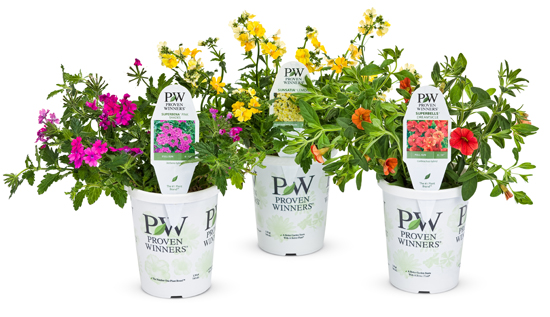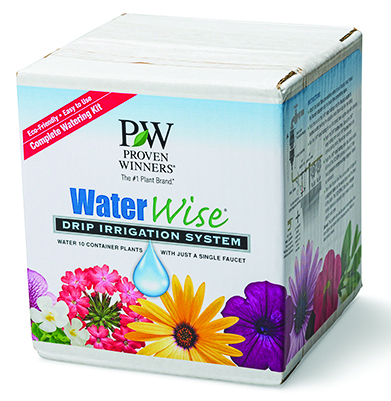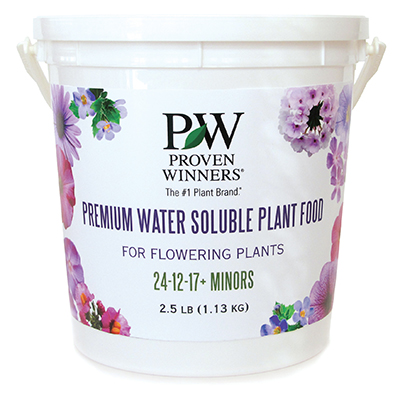Six Steps to Growing Beautiful Hanging Baskets
Hanging baskets are a great way to add color and interest to your home. Here are six keys to help you succeed.
 Step One – Choose Your Basket
Step One – Choose Your Basket
There is really only one non-negotiable requirement for your basket – it needs to have adequate drainage holes so soil doesn’t remain too wet. Once you’ve covered this basic need, the rest of the features are up to you. My best suggestion is to look for a larger basket, since this helps make it easier to keep up with watering.
If you travel or have a hard time keeping up with watering, you may want to consider investing in self-watering hanging baskets. These baskets include a water reservoir that replenishes soil moisture, decreasing how often you need to water. A wide variety of baskets types are available, so you should be able to find something that suits your style, space and needs.
Step Two – Pick your Plants
 Before you start buying plants, figure out about how much sun each basket will get a day. This will determine whether you need plants adapted to sun or shade conditions. Beyond this basic plant need, you have a lot of leeway.
Before you start buying plants, figure out about how much sun each basket will get a day. This will determine whether you need plants adapted to sun or shade conditions. Beyond this basic plant need, you have a lot of leeway.
Some things to consider:
- Limit plant height to no more than 8 inches
- Choose some plants that will trail over the basket edge
- Choose plants that fit your gardening style or environment
Step Three – Good Potting Soil is Key
Potting Soil isn’t the most compelling subject in gardening, but using a good quality, lightweight potting mix will make success much more likely. (use this link on the bolded words: Do replace potting soil each year, as it is healthier for your plants. Learn More about Potting Soil.

Step Four – Water Wisely
You’ve already chosen a pot with drainage holes, so the next step is to monitor your basket and water when the soil is dry to a depth of about 1 inch. This may mean watering once a week, once a day or even twice a day as your plants get larger and the weather gets warmer. I know watering on a schedule is tempting, but it is best to water when your plants need it, rather than on a set schedule.
It is best to check the soil moisture in your baskets at least once a day, rather than waiting for the plants to wilt before watering. When plants wilt that means they are quite stressed, so watering before the soil gets that dry is better for your plants.
If life is busy and you find it difficult to check your baskets and water regularly, then an automated system such as our WaterWise system can make life much easier. This video demonstration will show you how easy it is to use. You will still need to check your baskets and adjust the frequency and length of time you water as your baskets grow and temperatures rise.
Watering is the task you’ll perform most often for your basket, which means it’s also going to have the most impact on how well your basket performs. This article has more information on the best watering practices. This video tutorial about how often you’ll need to water might be helpful as well.
Step Five – Feed Regularly
It’s easy to let feeding your plants regularly slip off your to do list. I know it happens to me. However, using a high quality plant food consistently is pretty much the BEST thing you can do to help your plants thrive.
Mix in a good quality controlled-release plant food when you plant your basket. This application should last around two months.
When the plants begin to really put on some new growth, feed them with water soluble plant food every third time you water or at least once per week, following the instructions on the package. This consistent boost of energy is really helpful for keeping the basket looking great and growing well.
Step Six – Trimming or Pruning Your Annual Hanging Baskets
You could go all summer without ever needing to trim your basket, but it may also get a little unkempt and need to be tidied. The good news is that trimming up your basket is a pretty simple process.
To trim an annual basket that has mounded and/or trailing plants, start by cleaning a sharp pair of scissors or pruning shears with soap and water. If the planter just looks a bit open and untidy, all you need to do is trim off a few inches of plant material all over. Think of it like you were heading to the salon to get an all over trim to get rid of split ends. Don't trim too hard--you don’t want to remove more than about ¼ of the volume of the plant. You want to give it a trim, not a full haircut. This video demonstrates how to trim your annuals.
Your basket might also just have a few stems that are long or sticking out at odd angles. If that is the case, just cut back the specific stems that are problematic and call it a day.
The next time you water after trimming back your plant, use a water soluble plant food. This will quickly give your plant an infusion of energy and will kickstart new growth and branching. In no time at all, your basket will look better than ever.
Learn more about caring for your annual plants:




